"We have passed the peak of the second wave," said France's President Emmanuel Macron. "Our efforts, your efforts, have paid off. We have slowed down the circulation of the virus."
The country's daily rise in cases, which had topped 50,000 in early November, had dropped to just above 10,000 when Macron announced stages towards ending the country's COVID-19 lockdown, starting with the reopening of non-essential shops.
But he warned "we still have several weeks in front of us" and set a target of reducing the daily total of new cases to 5,000. His prediction was only too right, his target has so far proved only too unattainable.
READ MORE
Latest EU-UK dispute explained
Who bought Italy's one-euro homes?
China's Two Sessions at a glance
France's subsequent daily case rate may not have had the peaks of some other European countries, notably Spain and the UK, but nor did it have the troughs that followed their tough lockdown measures. By early January it was 15,000 new cases per day, by late January 20,000 and by mid-February its gradual rise had taken it back above Spain and the UK.
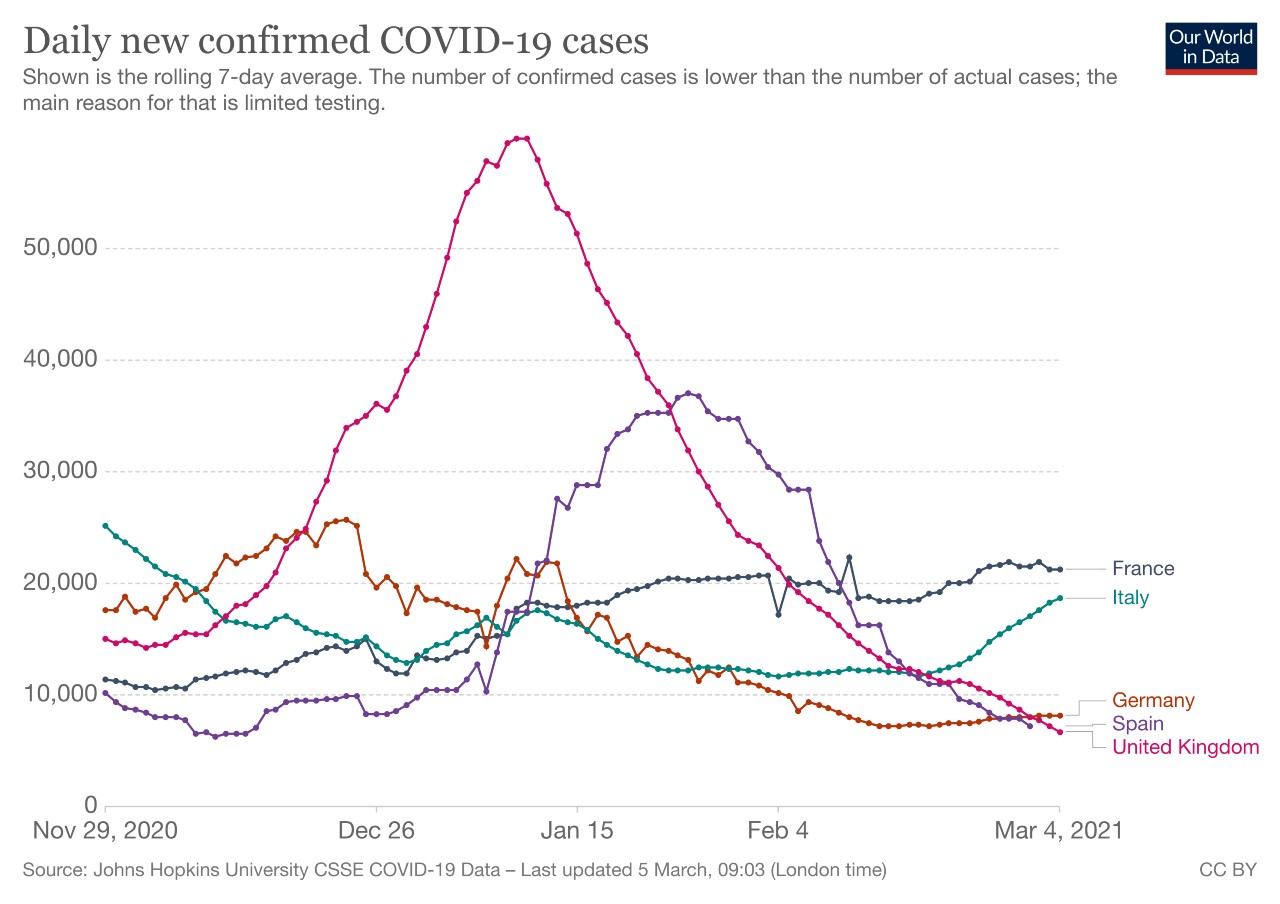
France has maintained a watching brief, studying the statistics and tweaking its rules at certain times and in certain places, while resisting calls from certain quarters to reinstate a full lockdown as it tries to minimize the damage to its economy.
It's never been off the table. On Thursday March 4, prime minister Jean Castex one again nudged the dials, imposing a weekend lockdown in another region and saying a full lockdown is "not impossible."
Nor can the government be accused of being disengaged. After all, shortly before Christmas, Macron became a statistic himself by testing positive – and every day for the last six weeks or so, around 20,000 of his compatriots have suffered the same outcome.
But what has France done – or not done – to suffer this slow reversal?
The lockdowns
France has had two national lockdowns. The first was announced in mid-March 2020, originally for 15 days but later extended before being loosened only gradually. Schools started to return from mid-May, a 100 kilometer travel limit was lifted in early June and by mid-July things appeared to be back to normal.
Like much of Europe, France somewhat lowered its defenses during the summer months. Cases spiked across the continent throughout October and after overnight curfews failed to stop the surge, Macron started a second lockdown on October 30, saying France must "brutally apply the brakes" to avoid being "submerged by the acceleration of the epidemic."
This lasted four weeks and case numbers dived from 50,000 a day to 10,000, before non essential services were able to reopen, with travel restrictions eased two weeks later.
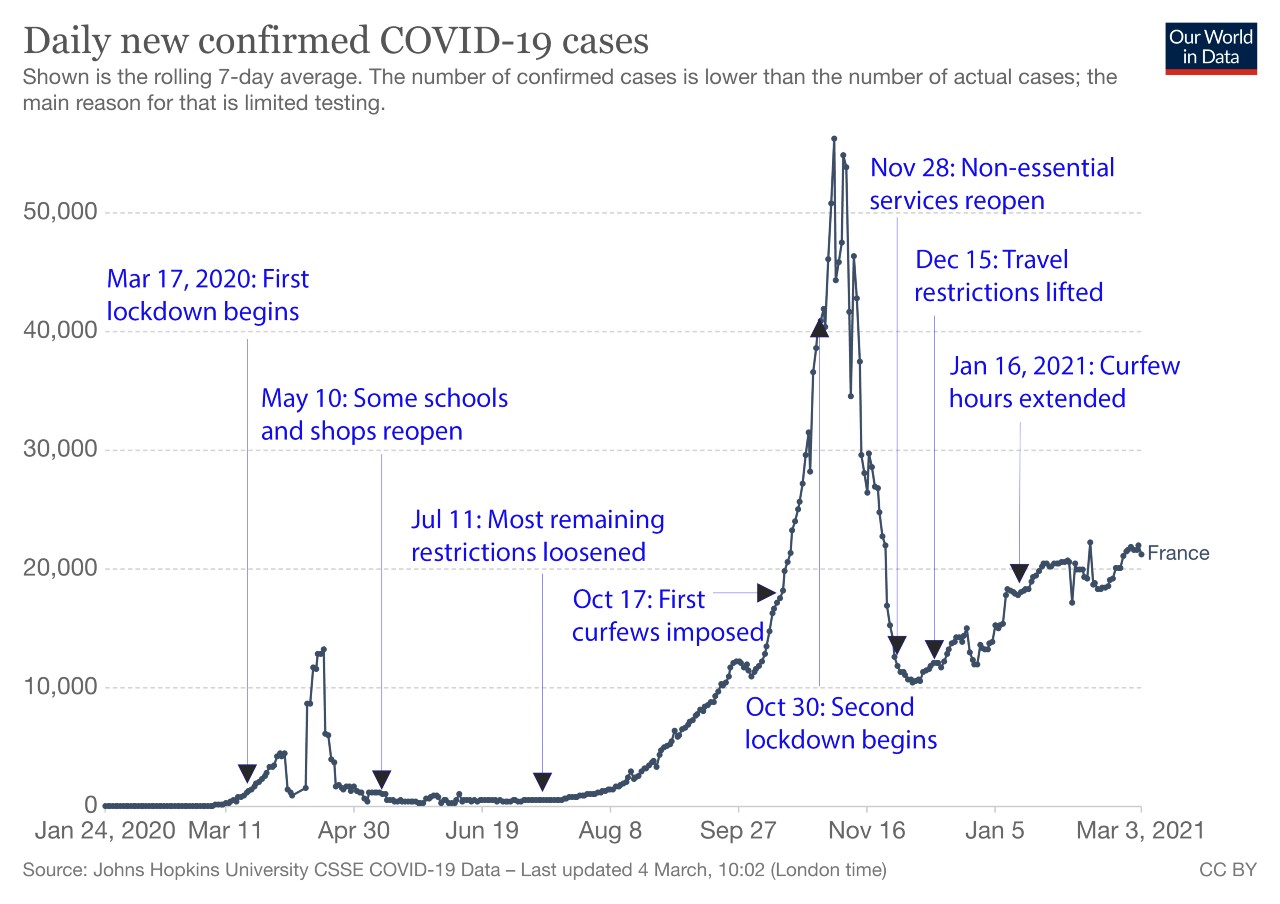
Schools and businesses
In its spring lockdown, the first French schools to close were in Haut-Rhin, bordering Germany and Switzerland, on March 6, 2020. Within a week all other schools and universities were closed. Primary schools reopened on May 11, with middle schools and creches following five weeks later.
The second time around, France kept its schools and factories open, but Macron insisted the public would only be allowed out for essential work or medical reasons, shuttering non-essential businesses and enforcing homeworking where possible.
As in the first lockdown, the list of essential businesses included boulangeries, cheesemongers, butchers, wine stores and tabacs. By late November – when Macron was correctly announcing the second peak had passed and setting his 5,000 daily new-case target – non-essential services reopened and exercise restrictions relaxed albeit with a focus on mask wearing.
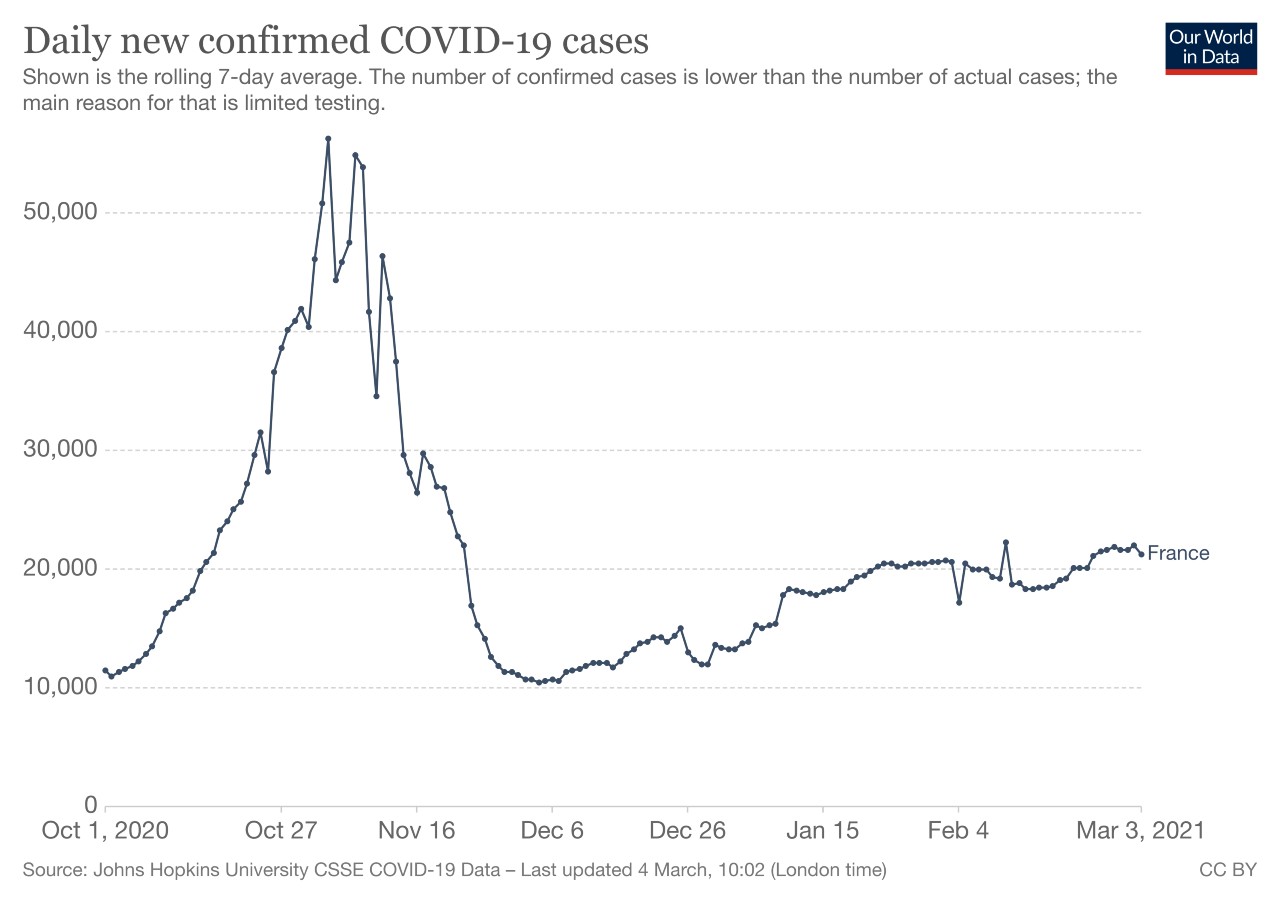
Curfews and attestations
What has remained in place is the overnight curfew, which slightly predates the second lockdown. Initially 9 p.m. to 6 p.m. in Paris and surrounding districts, it was taken nationwide (and an hour earlier) in mid-December, and its length extended still further – it's now 6 p.m. to 6 a.m. – from mid-January.
The curfew is now the only time that members of the public need to carry an attestation – a signed and dated official form stating a reason to be out, such as essential shopping, medical visits, caring for others, dog-walking or exercise. In both lockdowns, this was initially required to be presented upon request – and people were expected to limit themselves to within 1 kilometer of home for up to an hour.
Some politicians have campaigned for stricter restrictions since, with Paris mayor Anne Hidalgo pitching for a three-week 'firebreak' lockdown. However, Hidalgo herself has also more recently called the mooted idea of a weekend lockdown – as has been implemented in some high-incidence towns and cities – "inhumane."
Borders
The closing of borders is another lever France has pulled in an attempt to keep COVID-19 under control. On January 31, when some were pressing for a stricter lockdown, France closed its borders to all but exceptionally important travel from outside the EU, while tightening the testing requirements on those arriving from within the bloc.
Exemptions were made for travelers from low-risk countries – initially Australia, South Korea, Japan, New Zealand, Rwanda, Singapore and Thailand – and the French trade minister was also quick to quell panic from across the Channel by confirming that hauliers transporting goods to or from the UK would not be affected.
In the first lockdown, France had closed its borders from mid-March. In line with other EU members, it had reopened its Schengen borders in mid-June and exempted a limited but growing number of countries outside the bloc from July onwards.
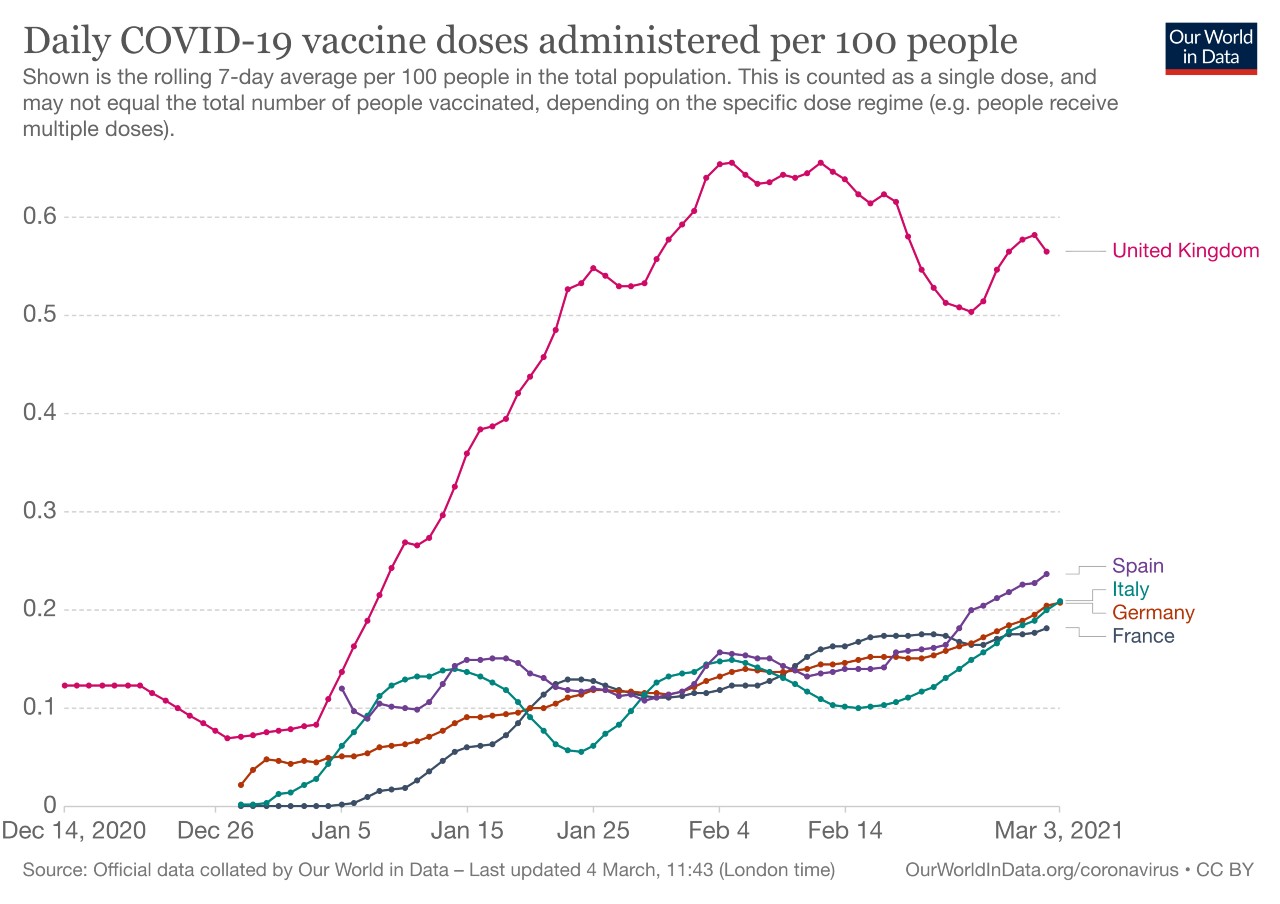
Vaccines
Surveys indicate that the French are some of the most cautious in Europe about accepting vaccines.
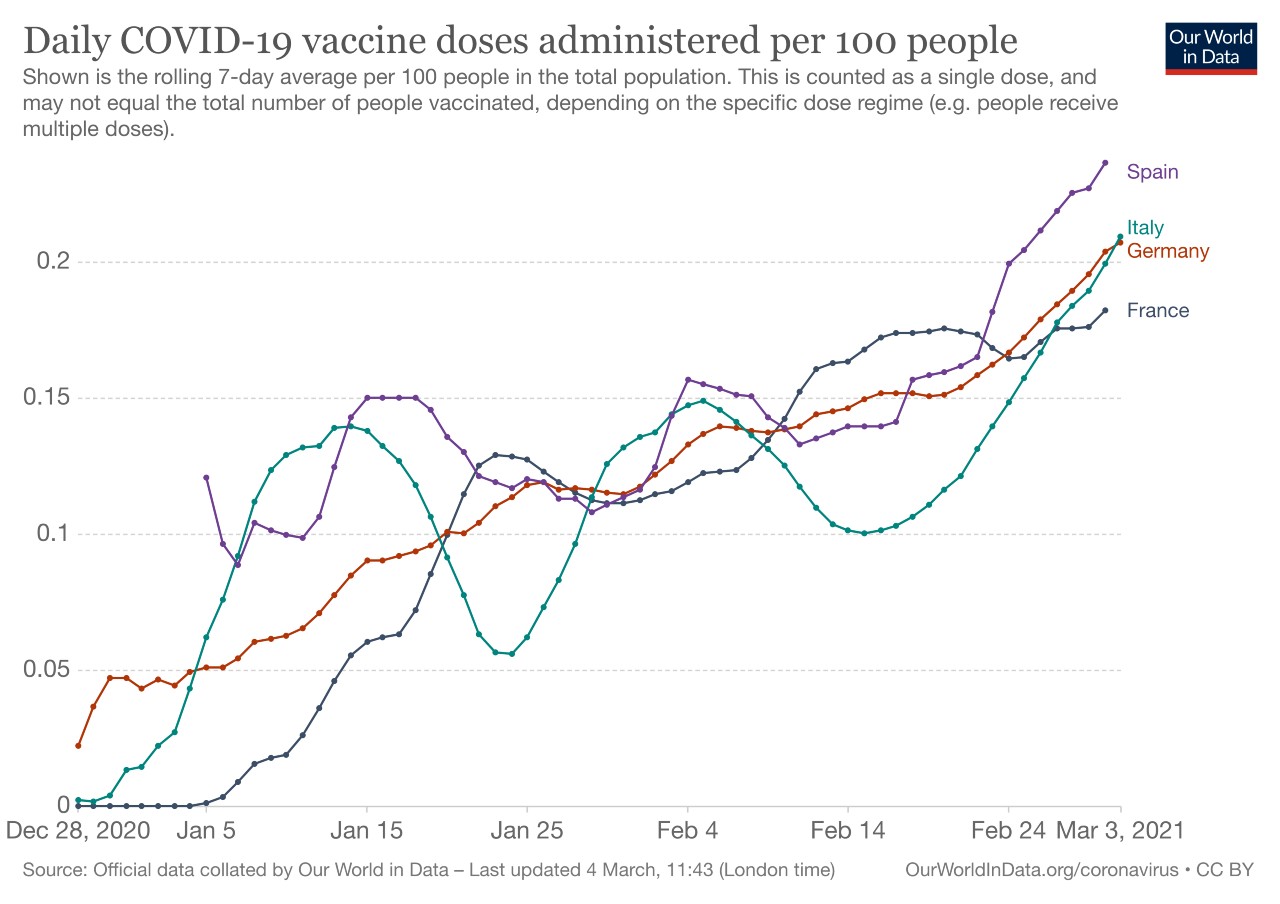
France has lagged significantly behind the UK in its vaccination program, although a late start has brought it into line with other EU nations. The French government's vaccination co-ordinator Alain Fischer admitted that the Oxford University–AstraZeneca vaccine has had "a pretty bad press in France."
That undoubtedly included a spat with the post-Brexit UK over the distribution of the AstraZeneca jab, which Macron initially claimed was “quasi-ineffective" on over-65s. Macron has since somewhat retracted that statement and the government have now approved the AstraZeneca jab for over-65s.
While France's jab-rate declined notably in late January, that was due to supply problems with both AstraZeneca and Pfizer, temporarily delaying the rollout in Paris and two other major regions together accounting for a third of the country's populations. Macron made his comments on January 29, and the rate of inoculations either rose or held steady for three full weeks thereafter.
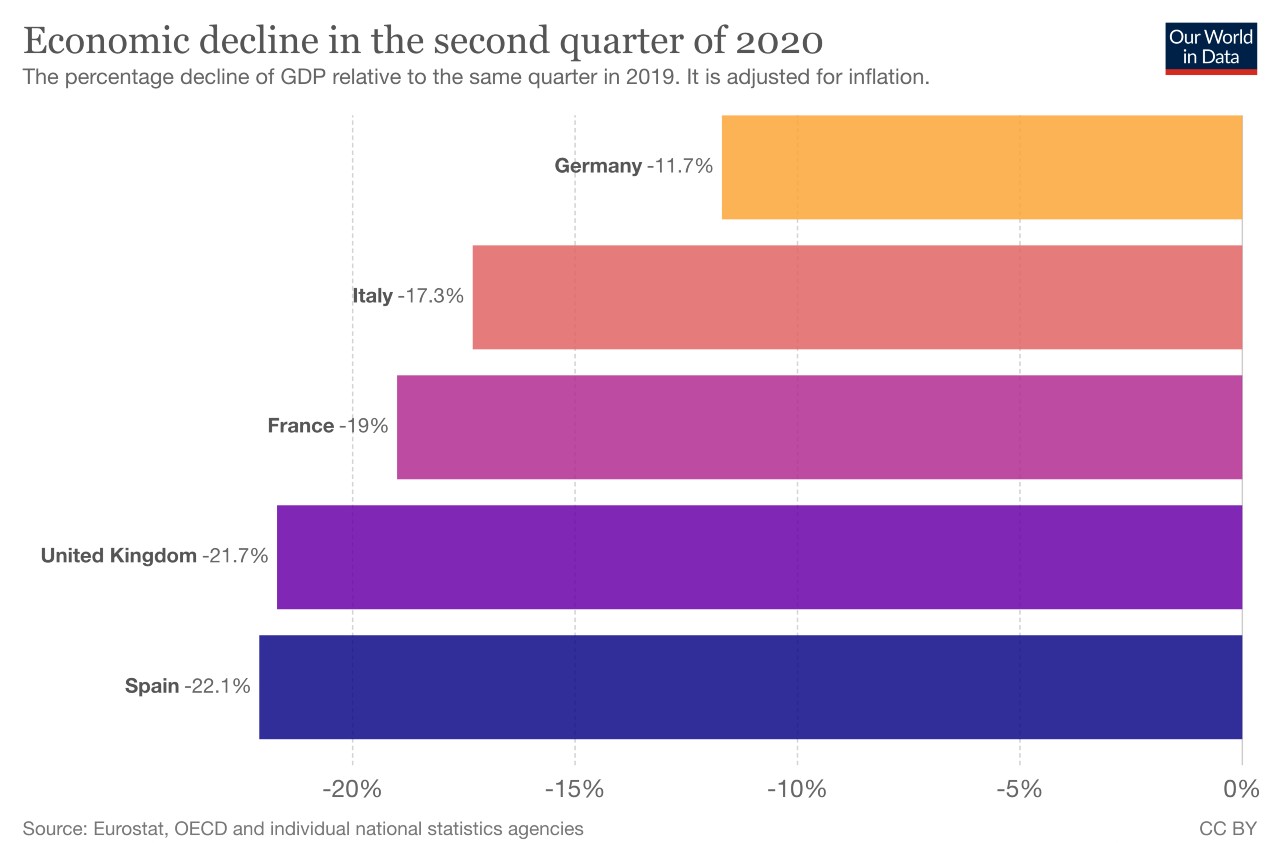
The economy
The ongoing resistance to enacting a lockdown as tight as the first has been on economic grounds, with the government understandably keen to avoid the recession that would almost inevitably ensure.
As in many European countries, France's second-quarter GDP in 2020 had been badly affected by its strict lockdown, less so its Q4 results by slightly lighter anti-pandemic measures. Whereas the Q2 results were down 19 percent on the same period in 2019, Q4 GDP was down just 5 percent year-on-year.
While a similar story played out across Europe, France seems to have come out on the milder side of the continent's economic battering. Although Germany's Q4 GDP dipped only 3.9 percent year-on-year, Italy's dropped 6.6 percent, the UK's 7.8 percent and Spain's 9.1 percent.
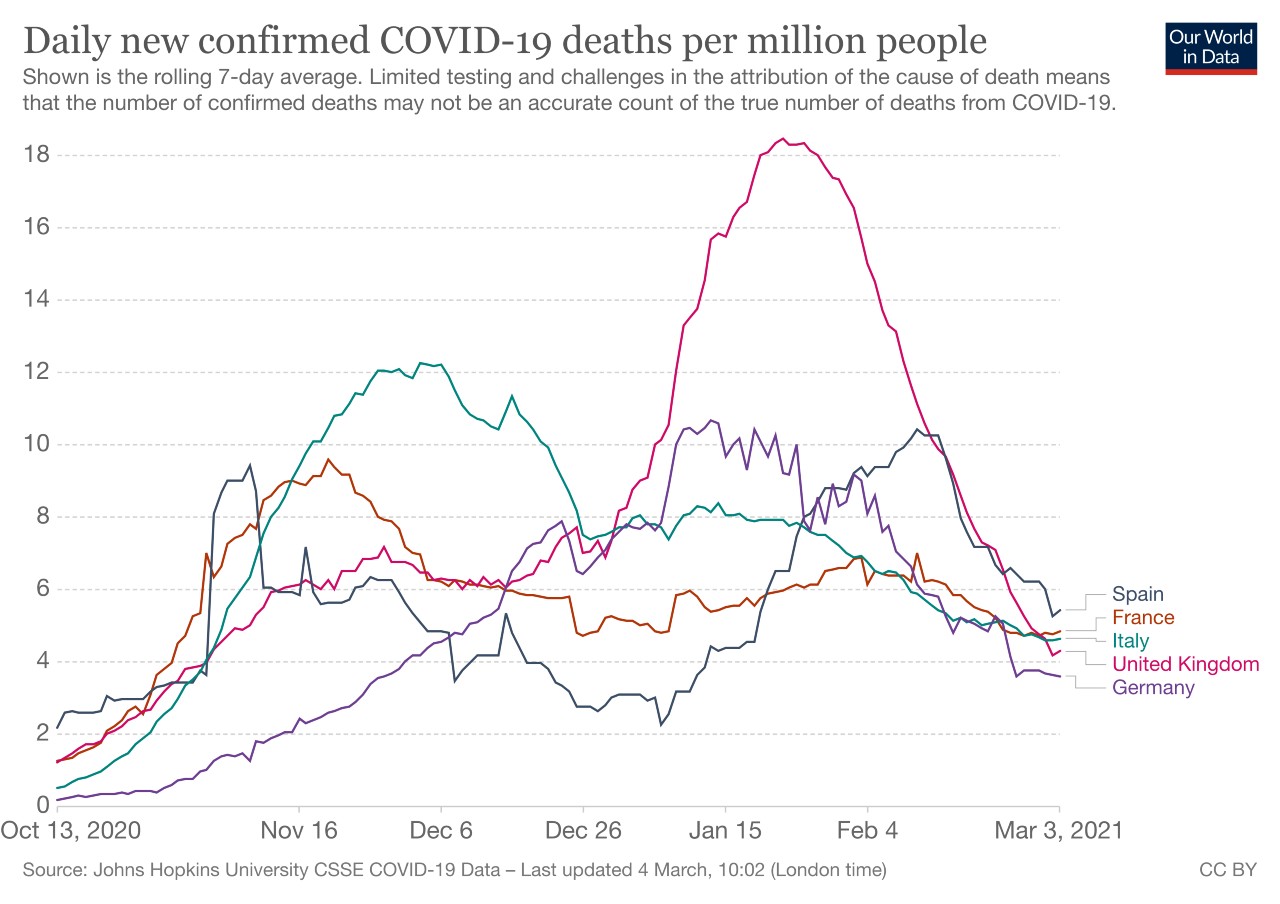
Deaths
If death is the great leveler, some countries have had higher peaks and lower troughs than France. Among our mini-group of five European nations, only France has not yet topped 10 daily deaths per million during this winter wave.
Italy spent the month before Christmas above that mark, peaking at 12.23 on December 4. The UK burst through it on January 5 and stayed there for six weeks, topping out at 18.46 on January 23. Germany spent a fortnight above 10 (peaking at 0.61 on January 8) and Spain, which had threatened it in mid-November, nudged above it in mid-February for a few days, peaking at 10.43 on February 11.
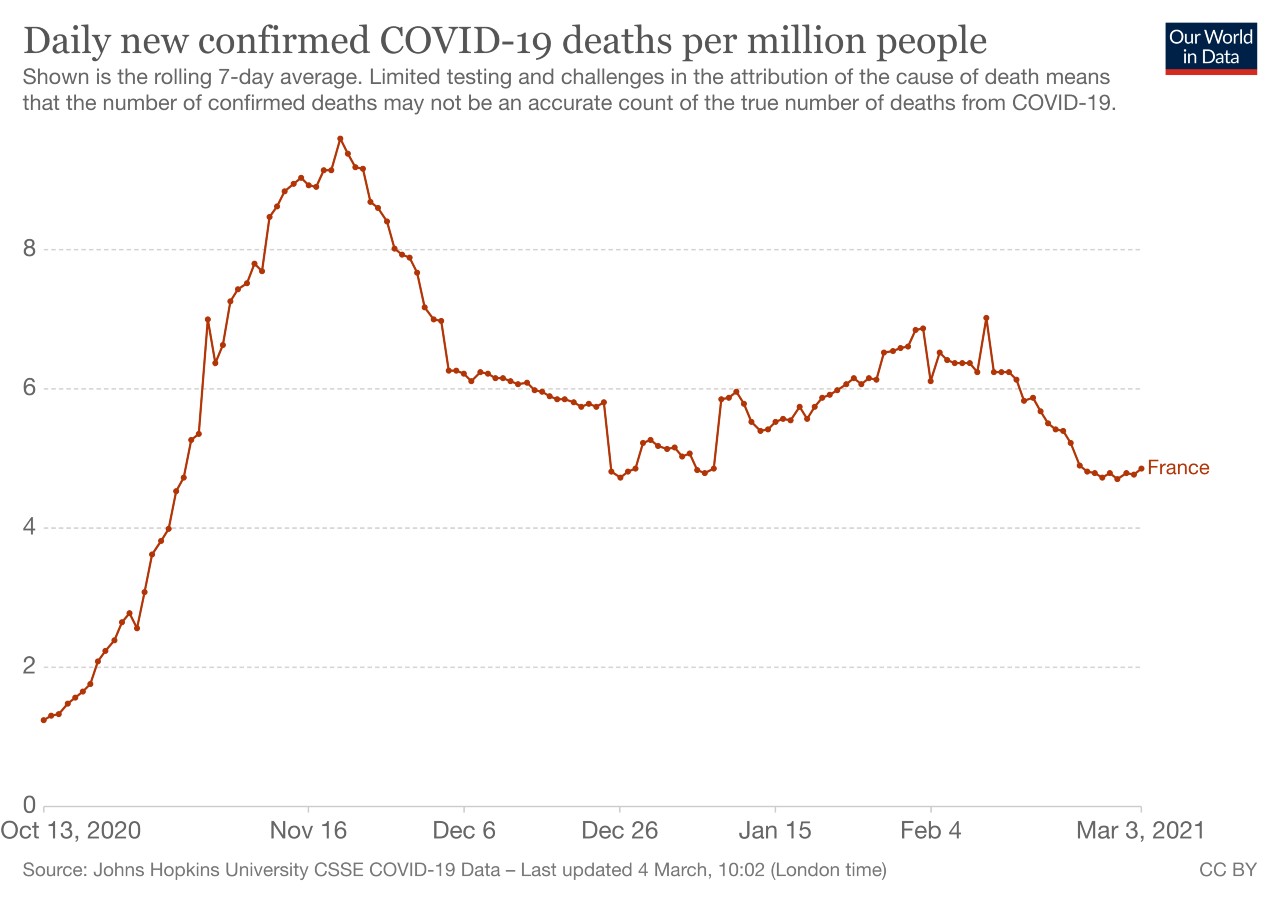
France, by contrast, hasn't been above 10 daily deaths per million since April 2020. Its November 20 peak of 9.59 quickly reduced by December 4 to around 6 deaths per million. It has remained relatively static between 5 and 6 ever since, although thankfully it has now spent a week under 5.
Although it would be hard to get any politician to use the phrase, perhaps the unspoken idea is that this is a manageable figure which doesn't overwhelm healthcare services but also doesn't undermine the economy. Macron may have made himself a hostage to fortune by targeting the 5,000 daily case figure, but his refusal to tighten lockdown suggests that perhaps he thinks France is hitting the hideously necessary balance between protecting lives and livelihoods.
The Answers Project podcast: How much is a human life worth?

